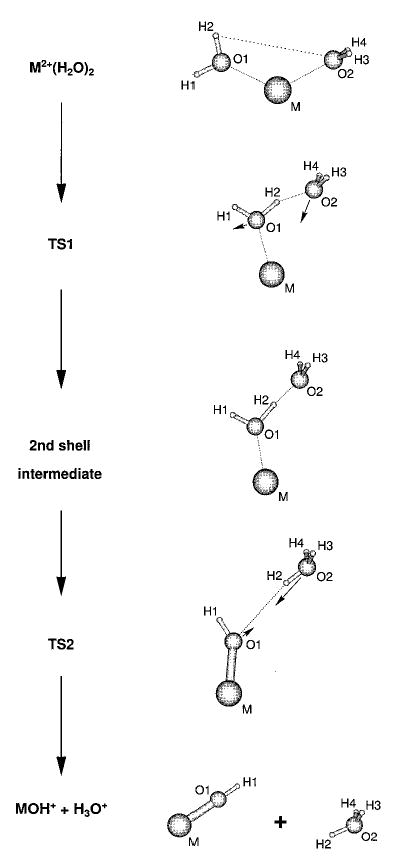Figure 1.

The general proton-transfer reaction pathway for dissociation of M2+(H2O)2 to produce MOH+ and H3O+ for magnesium, calcium, strontium, and barium. First, one water molecule is promoted from the first to the second solvation shell via transition state 1 (TS1) to form a second-shell intermediate structure. Second, proton transfer occurs via a salt-bridge structure in TS2. The two charged products separate due to Coulomb repulsion after TS2. The second-shell intermediate and TS2 do not exist for beryllium. The arrows in TS1 and TS2 indicate the reaction modes.
